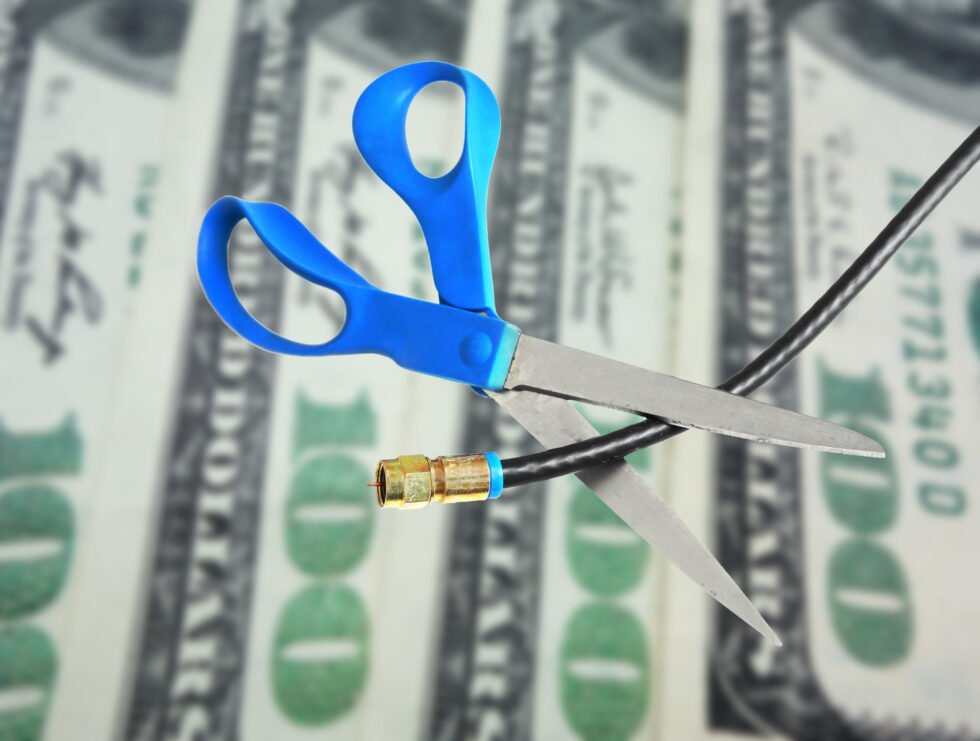
By Jay Bemis | Advertising Systems Inc.
A recent report from the analysts at eMarketer predicts a dire future for the pay-TV industry in the U.S., which was suffering before COVID-19 ever arrived and continues to gasp for numbers of subscribers during this pandemic.
The report, “US Cord-Cutter Households, 2019-2024,” says 6.6 million people will cancel their pay-TV subscriptions this year, bringing the number of cord-cutting households overall in recent years to 31.2 million.
And by 2024, the report predicts, “more than one-third of US households will have cut the pay TV cord.”
“While pandemic-driven lockdowns may have benefited certain forms of media, the traditional pay TV industry is not one of them,” the report concludes. “In fact, cable, satellite and telecom TV providers will lose the most subscribers ever.”
High prices, especially compared with streaming alternatives, have contributed to the cord-cutting frenzy as consumers tighten their wallets because of COVID-19. Another factor cited in the report was the loss of live sports — which has been one main draw for cable and satellite operators — because of pandemic precautions this past spring.
“While sports have returned,” the report says, “people will not return to their old cable or satellite plans.”
As cable and satellite providers suffer from all of the cord-cutting, so, too, have revenues from traditional TV ad spending.
The eMarketer analysts say such ad spending will drop 15% this year to $60 billion, the lowest total since 2011. And while that spending might rebound a bit next year, depending on the state of the pandemic, “TV ad spending will remain below pre-pandemic levels through at least 2024,” the report says.
“Given trends in cord-cutting, audience erosion, and growth in streaming video, more ad dollars will shift from TV to digital video in the future,” said Eric Haggstrom, an eMarketer forecasting analyst.
When Not Cutting the Cord, Americans Shop … Online
Meanwhile, in another report released just this week, eMarketer predicts e-commerce this year will reap nearly $795 billion in sales, up 32.4% “year-over-year.” That 32.4% increase compares to an 18% increase that eMarketer had projected back in this year’s second quarter.
“We’ve seen e-commerce accelerate in ways that didn’t seem possible last spring, given the extent of the economic crisis,” Andrew Lipsman, an eMarketer principal analyst, says of that report.
“While much of the shift has been led by essential categories like grocery, there has been surprising strength in discretionary categories like consumer electronics and home furnishings that benefited from pandemic-driven lifestyle needs.”
Indeed, the top 10 e-commerce retailers include the likes of electronics giant Best Buy, ranked sixth with $15.7 billion in projected sales during this pandemic-driven environment. Best Buy has plugged its curbside-pickup services heavily since this past spring.
Jeff Bezos & Company, not surprisingly, lead the way in the projected e-commerce sales, with Amazon projected to rake in more than $309 billion by year’s end.
Others in the top 10 include Walmart, second, $46.2 billion in online sales projected; eBay, third, $38.8 billion; Apple, fourth, $27.5 billion, and The Home Depot, fifth, $16.7 billion.
Following sixth-place Best Buy in the rankings were: Target, seventh, $13.8 billion; Wayfair, eighth, $11.6 billion; The Kroger Company (think curbside grocery pickup), ninth, $11.2 billion, and Costco Wholesale, 10th, $11.1 billion.
Said Cindy Liu, a senior eMarketer analyst, of that report:
“There will be some lasting impacts from the pandemic that will fundamentally change how people shop.
“For one, many stores, particularly department stores, may close permanently. Secondly, we believe consumer shopping behaviors will permanently change. Many consumers have either shopped online for the first time or shopped in new categories (i.e., groceries). Both the increase in new users and frequency of purchasing will have a lasting impact on retail.”
